nacos 集群配置
-
linux服务器上mysql数据库安装并配置(nacos脚本数据准备好)
-
application.properties文件配置内容:
spring.datasource.platform=mysql
db.num=1
db.url.0=jdbc:mysql://127.0.0.1:3306/nacos_config?characterEncoding=utf8&connectTimeout=1000&socketTimeout=3000&autoReconnect=true
db.user=nacos_devtest
db.password=youdontknow-
linux服务器上nacos的集群配置cluster.conf
cp cluster.conf.example cluster.conf:备份
配置各个节点:
#it is ip
#example
192.168.154.128:3333
192.168.154.128:4444
192.168.154.128:5555-
编辑nacos的启动脚本startup.sh,使它能够接受不同的启动端口(./startup.sh -p xxx,传递不同的端口号启动不同的nacos实例)
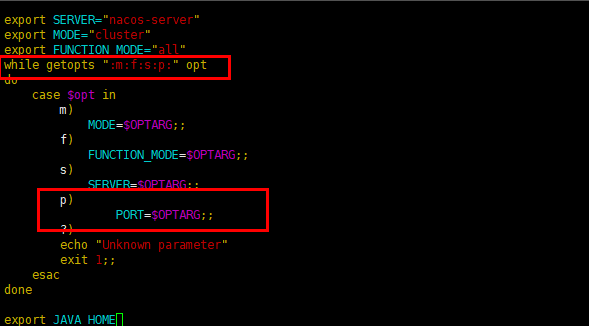
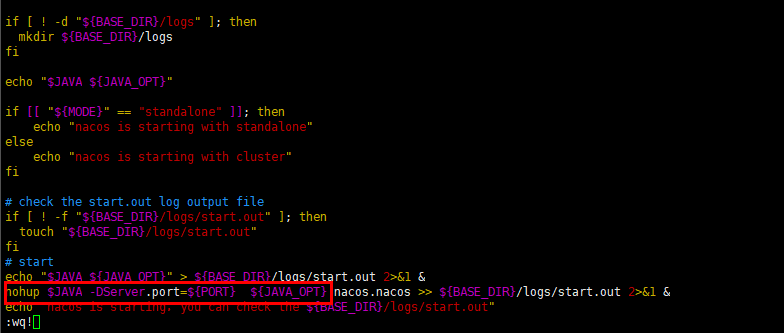
-
nginx的配置,由它来做负载均衡
修改nginx的配置文件nginx.conf
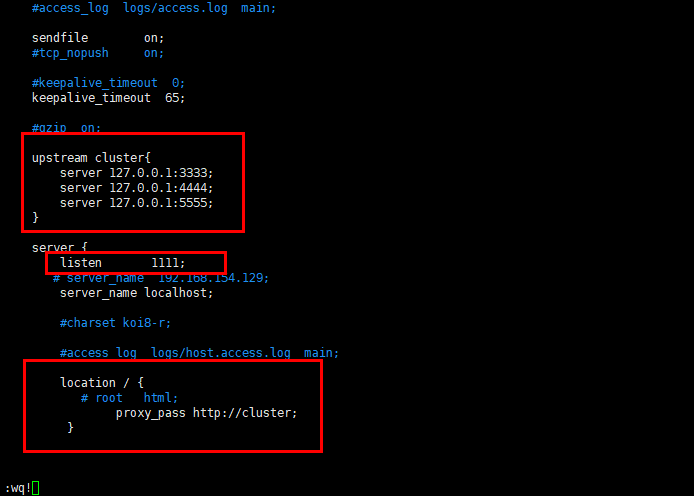
按照指定内容启动(linux -c参数表示指定配置文件)
启动nacos各节点
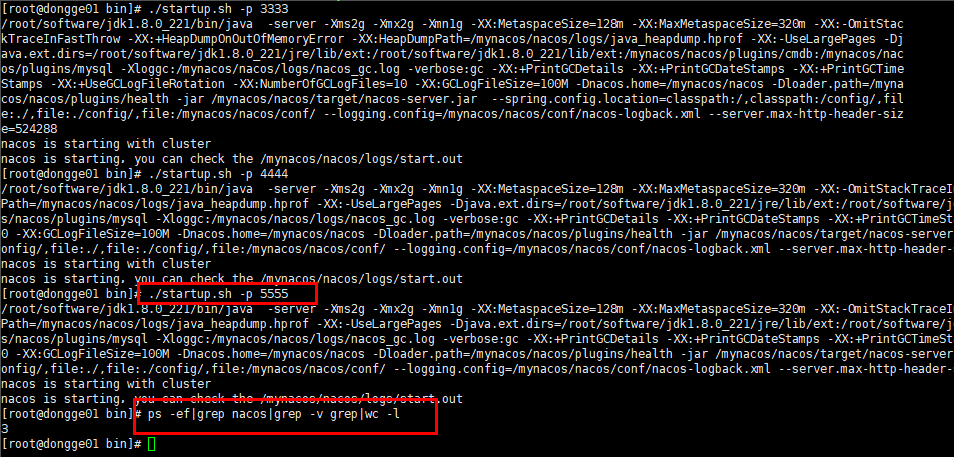
启动并通过nginx访问nacos:

Caused by: java.lang.RuntimeException: Nacos Server did not start because dumpservice bean construction failure :
No DataSource set (无数据源设置问题 )
分析:无数据源设置问题,可能加载的配置有问题,可能数据源无法访问等等.

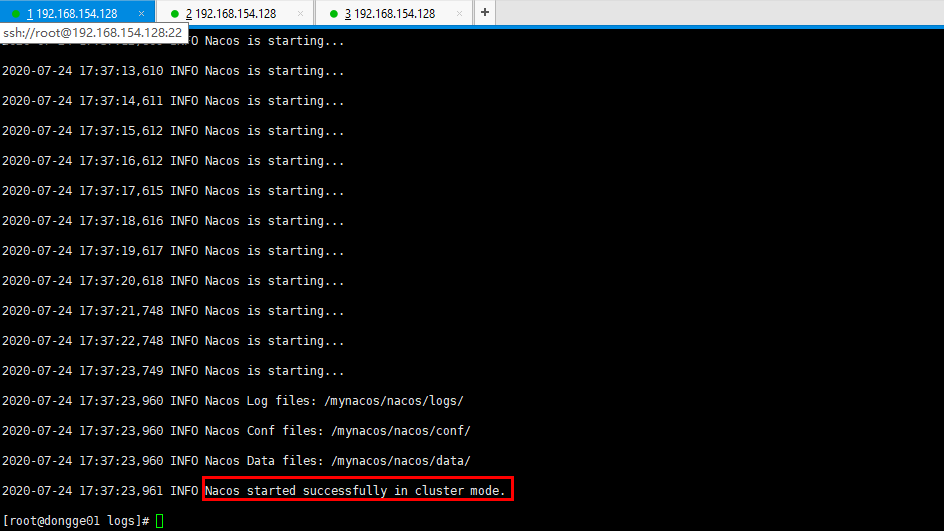
访问地址:http://192.168.154.128:1111/nacos/#/login
NICE!成功访问!

手动新建配置服务,相关信息成功记录到linnux-mysql中:

启动一个服务,由Nginx代理转发到Nacos某节点完成注册:
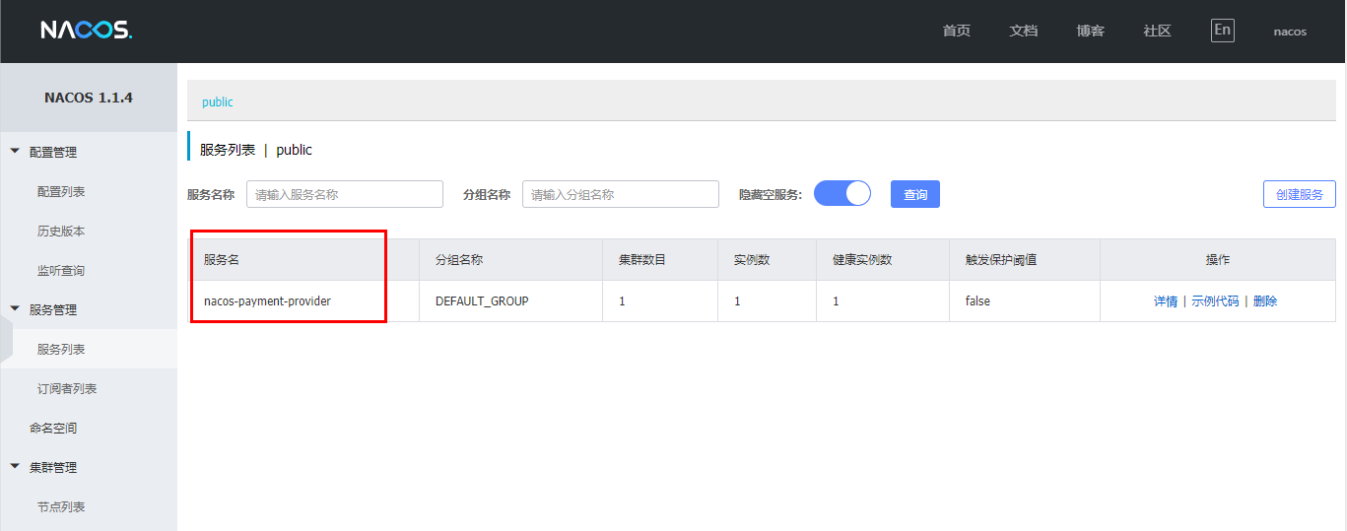
小结:nacos集群的启动,如果指定了数据源,则需要事先启动mysql并完成授权验证,否则nacos的日志中将出现该问题。
参考:https://www.ayunw.cn/archives/505
linux下Nacos Cluster架构:
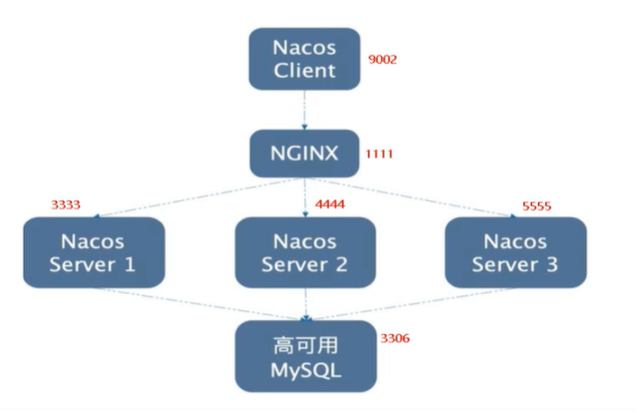
常用命令
-
ps -ef|grep nacos|grep -v grep|wc -l:查看集群节点总数
-
./nginx -c /usr/local/nginx/conf/nginx.conf:关联配置文件启动
-
nginx -s reload: 修改后重载(需在Nginx启动后使用,否则会出现没有相应PID问题)
-
nginx -s stop 或 ./nginx -s stop : 关闭nginx
-
ln -s /usr/local/nginx/sbin/nginx /usr/bin/:创建nginx软链接
-
netstat -nplt:查看网络情况(包含当前所有端口)
-
service iptables status/systemctl status firewalld:查看防火墙状态(注意版本)
-
centOS6查看防火墙状态命令: systemctl stop iptables.service
-
centOS7查看防火墙状态命令: systemctl stop firewalld.service
-
grant all privileges on *.* to 'root'@'192.168.154.128' identified by 'root'; :授权允许远程登录(需通过密码验证)
-
service mysqld/mysql restart:重启Mysql服务
-
curl ifconfig.me:查看外网ip
-
ifconfig:查看内网ip
-
show variables like '%timeout%'; :查看mysql超时时间
nginx-nginx.conf 默认配置
#user nobody;
worker_processes 1;
#error_log logs/error.log;
#error_log logs/error.log notice;
#error_log logs/error.log info;
#pid logs/nginx.pid;
events {
worker_connections 1024;
}
http {
include mime.types;
default_type application/octet-stream;
#log_format main '$remote_addr - $remote_user [$time_local] "$request" '
# '$status $body_bytes_sent "$http_referer" '
# '"$http_user_agent" "$http_x_forwarded_for"';
#access_log logs/access.log main;
sendfile on;
#tcp_nopush on;
#keepalive_timeout 0;
keepalive_timeout 65;
#gzip on;
server {
listen 8080;
server_name localhost;
#charset koi8-r;
#access_log logs/host.access.log main;
location / {
root html;
index index.html index.htm;
}
#error_page 404 /404.html;
# redirect server error pages to the static page /50x.html
#
error_page 500 502 503 504 /50x.html;
location = /50x.html {
root html;
}
# proxy the PHP scripts to Apache listening on 127.0.0.1:80
#
#location ~ \.php$ {
# proxy_pass http://127.0.0.1;
#}
# pass the PHP scripts to FastCGI server listening on 127.0.0.1:9000
#
#location ~ \.php$ {
# root html;
# fastcgi_pass 127.0.0.1:9000;
# fastcgi_index index.php;
# fastcgi_param SCRIPT_FILENAME /scripts$fastcgi_script_name;
# include fastcgi_params;
#}
# deny access to .htaccess files, if Apache's document root
# concurs with nginx's one
#
#location ~ /\.ht {
# deny all;
#}
}
# another virtual host using mix of IP-, name-, and port-based configuration
#
#server {
# listen 8000;
# listen somename:8080;
# server_name somename alias another.alias;
# location / {
# root html;
# index index.html index.htm;
# }
#}
# HTTPS server
#
#server {
# listen 443 ssl;
# server_name localhost;
# ssl_certificate cert.pem;
# ssl_certificate_key cert.key;
# ssl_session_cache shared:SSL:1m;
# ssl_session_timeout 5m;
# ssl_ciphers HIGH:!aNULL:!MD5;
# ssl_prefer_server_ciphers on;
# location / {
# root html;
# index index.html index.htm;
# }
#}
}